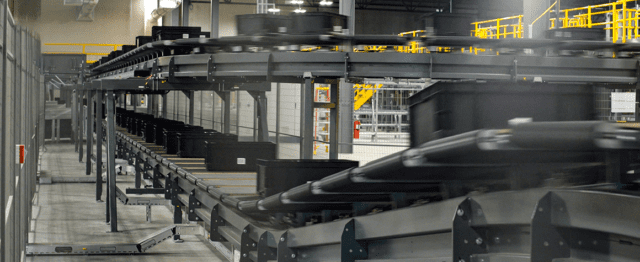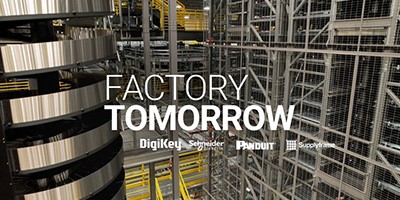Eric Wendt and Eric Halvorson, Digi-Key Electronics
Potential abounds in the automation and control space today – prior to the COVID-19 pandemic, the market was already set to grow immensely in the coming years. Today, in the wake of pandemic disruptions to the global supply chain, automation is expected to grow even faster, and the variety of industries and applications that can benefit from automation is virtually limitless.
It is more than clear that automation solutions like robots will not replace workers or eliminate jobs as originally believed. Instead, we see robots taking on manual, tedious or monotonous tasks that may pose a safety risk to employees, or more simply, tasks they don't want to do. This allows those same employees to learn valuable new skills and move up the career ladder.
Automation also helps companies keep up with supply and demand, even when employees may not be available to fill the positions, as was the case during the pandemic. For example, Intel recently announced the construction of two fully modernized new facilities in the US that will use automation to be able to produce chips at a much higher rate than would be possible if they only relied on the 3,000 employees they plan to hire.
Getting started with control and automation solutions is easier than ever. Here's a glimpse of the latest developments and trends that are shaking up the industry.
DIY
Today, the typical individual is much more comfortable using technology than ever before thanks to the proliferation of smartphones, home automation systems, e-commerce shopping, and other pervasive technology solutions throughout society.
At the same time, control and automation solutions are becoming more accessible and easy to use, allowing an engineer who has never tackled an automation project before to configure and program an automated device or teach a robot in a language. or with a program you are comfortable with.
As a result of these trends, many industrial engineers today feel quite comfortable purchasing automation products online. Very often these engineers will take on a small project in an industrial setting by learning on their own through online research, reviewing manufacturer resources, playing videos and more; often they can take on small to medium projects without any outside help.
It is also quite common for companies to adopt automation first for security reasons. Safety is of the utmost importance, and employee injuries are not only costly, but can also undermine employee confidence and trigger expensive and time-consuming investigations with regulatory organizations. For this reason, many companies start their automation journey with security enhancements and progress from there.
Una light curtain security is an excellent example of a small security project that could be done on your own with some research and effort. This is a device that emits invisible beams of light across an area and slows down or stops a machine or process when something interrupts the beam. These curtains are ideal for many applications: they are fairly simple to set up, they still allow access to the machine, and they help keep people safe.
Of course, there will be times when doing things yourself will not be enough. Large and complex automation projects often require the support of a team of experts called system integrators.
System Integrators
One of the main hurdles facing large-scale automation projects, aside from finding the right pieces that are interoperable in a specific environment, is choosing the right things to automate. This is where it becomes crucial to partner with an expert systems integrator to help identify areas that can or should be automated, which, in turn, will help the organization save time and money in the long run.
System integrators bring immense value to their customers. After reviewing a plant's production processes and identifying areas that could be improved with automation, system integrators design and build, for example, custom equipment, machines, and production lines to support that process. They are also essential partners in configuring and testing these solutions, integrating them into existing processes, analyzing how much time and money an organization could save, and much more.
An excellent example of this is Digi-Key's PDCe (Product Distribution Center Expansion) project at our Thief River Falls, Minnesota, headquarters. We work closely with KNAPP to design a new system from scratch, fix bugs and identify new areas of opportunity, among other things. In addition, they will be available for several years after the end of the project to help train employees and continue to refine the system.
Automation within Digi-Key
Digi-Key offers the leading control and automation brands that bring the world's ideas to life, even in your own warehouse.
Digi-Key first began using control and automation solutions in its own warehouse 30 years ago. As the company grew, leaders realized that automation was a critical element in expanding their fulfillment operations by improving quality, increasing capacity, and increasing efficiency.
The first example of automation at Digi-Key was the use of a container routing system, and since then countless automated solutions have been introduced using the same components we offer in our product line: sensors, motors and controllers, robotics , connector cables, power components and much more.
There is no sector of the automation market that No. is destined to grow in the next five years. At Digi-Key, we look forward to seeing what products leading automation vendors bring to market, as well as implementing many of these innovations into our own operations for future scalability and success.







